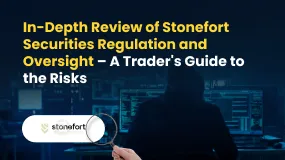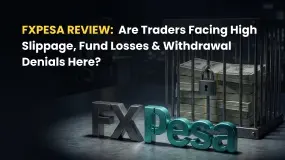简体中文
繁體中文
English
Pусский
日本語
ภาษาไทย
Tiếng Việt
Bahasa Indonesia
Español
हिन्दी
Filippiiniläinen
Français
Deutsch
Português
Türkçe
한국어
العربية
9 Rules for Trading Divergences
Abstract:Divergences are one of my favorite trading concepts because they offer very reliable high-quality trading signals when combined with other trading tools and concepts.

Divergences are one of my favorite trading concepts because they offer very reliable high-quality trading signals when combined with other trading tools and concepts.
A divergence forms on your chart when price makes a higher high, but the indicator you are using makes a lower high. They are used by traders in seeking to determine if a trend is getting weaker, which may lead to a trend reversal or continuation. Before you proceed there and begin looking for potential divergences, here are nine cool rules for trading divergences.
They are important to know, you should Learn them, understand and memorize them all (or keep revising this lesson), use them for your guide to make better trading decisions at all the time. Failure to do so, then you go bankrupt.
1. Ensure your glasses are clean
For a neat divergence to exist, the price must have either formed one of the following:
• Higher high than the previous high
• Lower low than the previous low
• Double Top
• Double Bottom
Never even worry looking at an indicator expect one of these four price scenarios has occurred. Otherwise ignore, you are not trading divergence, but just imagining things. Quickly go see your optometrist and get some new glasses.
2. Draw lines on successive tops and bottoms
So now that you got some action (recent price action), observe it clearly. And note that youll only spot one of four things: a higher high, a flat high, a lower low, or a flat low.
The next it to draw a line backward from that high or low to the previous high or low. But it should be on successive major tops/bottom. If you notice any small bumps or dips between the two major highs/lows, do what you need to do when you're chanced to. Or other shouts at you.
3. Connect TOPS and BOTTOMS only
The moment you observed two swing highs are established, you can proceed to connect the TOPS. If two lows are made, you connect the BOTTOMS.
4. Keep Your Eyes on the Price
Assuming you‘ve connected either two tops or two bottoms with a trend line. Then you should look at your preferred technical indicator and compare it to price action. Whatever indicator you notice, remember you are comparing its TOPS or BOTTOMS. Some indicators such as MACD or Stochastic have multiple lines all up on each other like teenagers with raging hormones. Don’t bother about what these Boys are doing.
5. Be Consistent With Your Swing Highs and Lows
Always note that If you draw a line connecting two highs on price, you MUST also draw a line connecting the two highs on the indicator as well. Similar for lows also. And If you draw a line connecting two lows on price, you MUST draw a line connecting two lows on the indicator. They have to be equivalent and looks same.
6. Keep Price and Indicator Swings in Vertical Alignment
The highs or lows you recognized on the indicator must be the ones that line up vertically with the price highs or lows. It‘s just like choosing out what to wear to the club, So You are going to looks fine and match your wears. Keep vertical alignment with the price’s swing highs and lows with the indicators swing highs and lows.
7. Watch the Slopes
It is important to know that Divergence only exists if the slope of the line connecting the indicator tops/bottoms varies from the SLOPE of the line connection price tops/bottoms.
The slope must either be: Ascending (rising) Descending (falling) Flat (flat).
8. If the ship has sailed, catch the next one.
If you figured out divergence but the price has already reversed and moved in one direction for some time, the divergence should be considered bored. Which means You missed the boat this time but still you gotta another chance. All you can do now is wait for another swing high/low to form and start your divergence search over again.
9. Take a Step Back
Divergence signals tend to be more precise on the longer time frames. You get fewer false signals. This means fewer trades but if your trade formation is well, then your profit potential can be huge. Divergences on shorter time frames will occur more often but are unclear.
We recommend you to only look for divergences on1-hour charts or longer. Al though Other traders use 15-minute charts or even faster. But there is too much noise to try them so is better we avoid it.
So certainly you now have all the 9 rules need to know, and hopefully you get them all. If you seriously choose trading using divergences, then you should follow the rules. Believe us, you dont wanna be ignoring these rules. Your account will take more hits with WikiFX. Follow these rules, and you will dramatically increase the chances of a divergence setup leading to a profitable trade.
As a best way to get started with your skills of divergence, You can now continue to scan the charts and see if you can figure out some divergences that occurred in the past, give it try!

Disclaimer:
The views in this article only represent the author's personal views, and do not constitute investment advice on this platform. This platform does not guarantee the accuracy, completeness and timeliness of the information in the article, and will not be liable for any loss caused by the use of or reliance on the information in the article.
Read more

In-Depth Uniglobe Markets Commission Fees and Spreads Analysis – What Traders Should Really Know
For experienced traders, the cost of execution is a critical factor in broker selection. Low spreads, fair commissions, and transparent pricing can be the difference between a profitable and a losing strategy over the long term. This has led many to scrutinize the offerings of brokers like Uniglobe Markets, which presents a tiered account structure promising competitive conditions. However, a professional evaluation demands more than a surface-level look at marketing claims. It requires a deep, data-driven analysis of the real trading costs, set against the backdrop of the broker's operational integrity and safety. This comprehensive Uniglobe Markets commission fees and spreads analysis will deconstruct the broker's pricing model, examining its account types, typical spreads, commission policies, and potential ancillary costs. Using data primarily sourced from the global broker inquiry platform WikiFX, we will provide a clear-eyed view of the Uniglobe Markets spreads commissions prici

In-Depth Review of Stonefort Securities Regulation and Oversight – A Trader's Guide to the Risks
For experienced traders, the process of selecting a new broker transcends a simple comparison of spreads and leverage. It is a meticulous due diligence exercise where the integrity of the broker's regulatory framework is paramount. Stonefort Securities, a relatively new entrant in the crowded brokerage space, presents a complex and often contradictory profile. On one hand, it boasts a modern MT5 platform and a stream of positive user testimonials. On the other hand, it is shadowed by severe regulatory warnings that question the very foundation of its operations. This in-depth review focuses on the core issue for any long-term trader: Stonefort Securities regulation and oversight. We will dissect the broker's corporate structure, scrutinize its licensing claims, and analyze what the data implies for trader protection and fund security. For traders evaluating whether Stonefort Securities is a trustworthy partner, understanding these details is not just important—it is essential.

FXPesa Review: Are Traders Facing High Slippage, Fund Losses & Withdrawal Denials?
Do FXPesa support officials fail to pick up your calls when you raise fund withdrawal requests with the broker? But are these officials always open to you regarding fund deposits? Do you frequently spot slippage and stop-loss order execution errors on the FXPesa login? These issues are increasingly becoming common with this forex broker. Consequently, many traders have expressed their dissatisfaction with the broker online. In this FXPesa Review article, we have shared some of these complaints. Take a look!

Seaprimecapitals Withdrawal Problems: A Complete Guide to Risks and User Experiences
Worries about Seaprimecapitals withdrawal problems and possible Seaprimecapitals withdrawal delay are important for any trader. Being able to get your money quickly and reliably is the foundation of trust between a trader and their broker. When questions come up about this basic process, it's important to look into what's causing them. This guide will tackle these concerns head-on, giving you a clear, fact-based look at Seaprimecapitals' withdrawal processes, user experiences, and trading conditions. Most importantly, we'll connect these real-world issues to the single most important factor behind them: whether the broker is properly regulated. Understanding this connection is key to figuring out the real risk to your capital and making a smart decision.
WikiFX Broker
Latest News
WikiFX's New Evaluation of ATM Capital LTD: Does its License Protect the Arab Investor?
How a Fake Moomoo Ad Led to the “New Dream Voyage 5” Scam
Is Axi Legit? A Data-Driven Analysis of Its Regulatory Standing and Trader Feedback
Trive Investigation: High Score, Hidden Risk - The Profit Paradox
In-Depth Uniglobe Markets Commission Fees and Spreads Analysis – What Traders Should Really Know
FXPesa Review: Are Traders Facing High Slippage, Fund Losses & Withdrawal Denials?
CMC Markets Australia Revenue Surges 34%, But High-Net-Worth Clients Face Tax Phishing Threat
Bessent believes there won't be a recession in 2026 but says some sectors are challenged
mBank Exposed: Top Reasons Why Customers are Giving Thumbs Down to This Bank
Young Singaporean Trader Grew USD 52 into a USD 107,700 Portfolio
Currency Calculator



